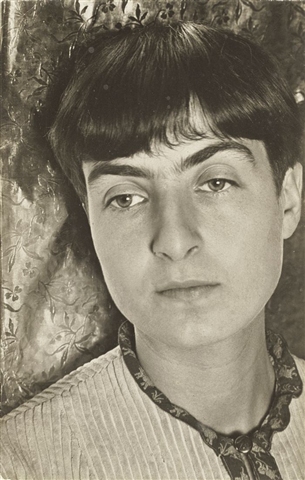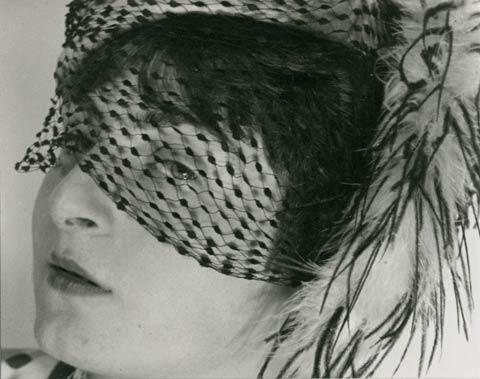 |
| image source: http://www.conchamayordomo.com/en/art/women-art-grete-stern Image by: unknown |
Stern's photomontages reflected women in psychologically distressing situations. She was true to the stories of dreams that the respondents submitted, but never in a way that suggested any sort of compromise with female sexual boundaries: no prostitution, no female sexual activism, and, certainly, no lesbianism. From this, readers had an honest and true sense of the images as they represented the dreams of the real-life women. Keeping in mind the fact that the narrative perspective of these photomontages is that of women telling their own story, the compromising situations in which they find themselves according to Stern’s images are those that are imposed upon them by the world in which they live. Knowing this, it is not surprising to find that the vast majority of the photographs emphasize the power of controlling, threatening, and violent men; in some cases, by a society as a whole, on the lives of the women in the pictures.
Grete Stern lived in a time where woman were constantly discriminated. Though gender based discrimination did not directly affect Stern to a great extent, it did for many of the other women photojournalists in this module content. Stern’s magazine, as well as the work of other women photojournalists of the time allowed females to express the importance of women in the working class and the feminist movement. Despite the course of history having come around to the idea of women in the workplace, there are instances and occupations even today that are dominated by one gender rather than another. For example, most police officers, firefighters, and prison guards are men, but other professions such as nursing, elementary education and social work are dominated by females. Though these professions are not exclusive to one gender or another, the suggestion is ever present. Bella Abzug said it well when she was quoted as saying, “The test for whether or not you can hold a job should not be the arrangement of your chromosomes”. Despite criticism, setbacks and probably several missed opportunities because of gender bias Stern said, “Photography has given me great happiness. I learned a lot and was able to say things I wanted to say and show”. Sometimes, it’s not about what everyone else thinks.
 |
| Image Source: http://jwa.org/media/auerbach-ellen-still-image Image by: Grete Stern Date Taken: 1931 |
The image is hard to look at. The veil covering the person's eyes makes her mysterious and unapproachable. Looking at the picture it makes me want to know more about what was happening at the time, but without having to ask the woman from the pciture. The image is like a large question mark.
Principle 2: Subject's expression
The subjects expression in the photo is also a bit hard to read. The line of her mouth suggests little expression of happiness or saddness. Her eyes appear sharp despite their covering from the veil. I feel as though the woman might have been watching someone or thinking.
Principle 3: Use of lines
The use of lines in this photo is plentiful. The outline of the woman's face along with the lines in both the veil and the feathers behind her head give the image depth and shape.
I picked this image because when looking through her collection, it stood out to me. I was intrigued by her expression and the fact that in comparison to her other photos this one featured a very zoomed in face which interested me.
 |
| Image Source: http://emblah13.wordpress.com/2013/04/03/grete-stern/ Image By: Grete Stern Date Taken: |
The texture that stood out to me in this image were the eyelashes. With choppy dark shadows in the lower aspect of the picture, the eyelashes appear soft and delicate. It adds dimension to the image.
Principle 2: Use of Light
Light in this photo is obviously coming from above and shining down on the top of the person's eye. It casts a shadow on the rocks and hands below and makes it seem like the hands are reaching up toward something rathe rthan just he top of the frame.
Principle 3: Black and White
Finally the use of black and white for this photo contributes to its effect. If the photograph was in color it may have been too much to look at. The black and white allows the viewer to focus on the content without the distraction of colors. I believe the black and white effect also helps to convey the emotion in the eye.
I chose this picture of Stern's because I liked how the light came down through the eyelashes. Though the other half of the picture is slightly abstract and unique, the eye is simple and filled with emotion which drew me to the picture.
Additional Resources Used
No comments:
Post a Comment